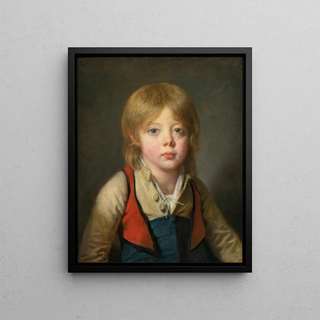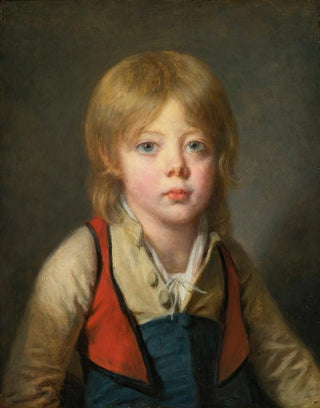Art print | Young Peasant - Jean-Baptiste Greuze


View from behind

Frame (optional)
In the fascinating world of 18th-century art, the art print "Jeune paysan" by Jean-Baptiste Greuze stands out for its ability to capture the very essence of rural life. This painting, imbued with realism and sensitivity, immerses us in a moment of contemplation, where the young man, with touching simplicity, seems to embody the beauty of traditional values. The art print Jeune paysan - Jean-Baptiste Greuze invites us to explore not only the artist's technique but also the emotions and stories hidden behind this striking portrait. Through this tableau, Greuze offers us a window into a world where nature and humanity intertwine harmoniously.
Style and uniqueness of the work
Greuze's style is characterized by a vibrant naturalism, which is evident in the meticulous depiction of the young farmer's features. The soft light illuminating his face accentuates the delicacy of his features, while the warm, earthy colors evoke the simple life of the peasants of the time. This work is distinguished by its intimate approach, where the artist manages to establish a strong emotional connection between the subject and the viewer. The gaze of the young man, both thoughtful and serene, seems to tell us a story, an invitation to reflect on the values of authenticity and simplicity. Greuze, a master of portraiture, succeeds in transcending mere visual rendering to offer a true emotional experience.
The artist and his influence
Jean-Baptiste Greuze, born in 1725, is an emblematic figure of the French artistic movement of the 18th century. His career, marked by a constant pursuit of emotion and truth, profoundly influenced his contemporaries and future generations of artists. Greuze established himself as an innovator, blending the genre of portraiture with broader themes such as morality and daily life. His humanist approach and attention to detail contributed to redefining the role of the painter in society, making art a means of expressing deep feelings and social realities. Through works like "Jeune paysan," he was able to capture the soul of

Matte finish

View from behind

Frame (optional)
In the fascinating world of 18th-century art, the art print "Jeune paysan" by Jean-Baptiste Greuze stands out for its ability to capture the very essence of rural life. This painting, imbued with realism and sensitivity, immerses us in a moment of contemplation, where the young man, with touching simplicity, seems to embody the beauty of traditional values. The art print Jeune paysan - Jean-Baptiste Greuze invites us to explore not only the artist's technique but also the emotions and stories hidden behind this striking portrait. Through this tableau, Greuze offers us a window into a world where nature and humanity intertwine harmoniously.
Style and uniqueness of the work
Greuze's style is characterized by a vibrant naturalism, which is evident in the meticulous depiction of the young farmer's features. The soft light illuminating his face accentuates the delicacy of his features, while the warm, earthy colors evoke the simple life of the peasants of the time. This work is distinguished by its intimate approach, where the artist manages to establish a strong emotional connection between the subject and the viewer. The gaze of the young man, both thoughtful and serene, seems to tell us a story, an invitation to reflect on the values of authenticity and simplicity. Greuze, a master of portraiture, succeeds in transcending mere visual rendering to offer a true emotional experience.
The artist and his influence
Jean-Baptiste Greuze, born in 1725, is an emblematic figure of the French artistic movement of the 18th century. His career, marked by a constant pursuit of emotion and truth, profoundly influenced his contemporaries and future generations of artists. Greuze established himself as an innovator, blending the genre of portraiture with broader themes such as morality and daily life. His humanist approach and attention to detail contributed to redefining the role of the painter in society, making art a means of expressing deep feelings and social realities. Through works like "Jeune paysan," he was able to capture the soul of






